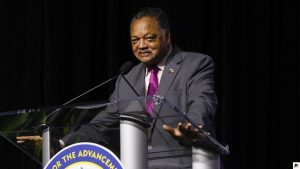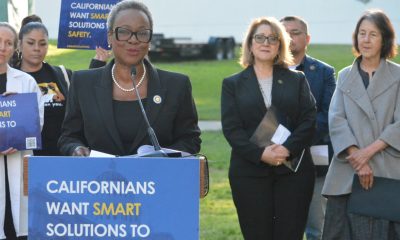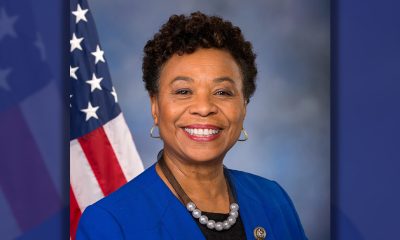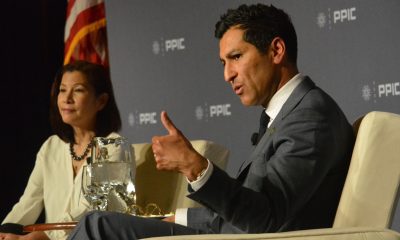Community
Fight Over Vallejo NAACP Presidency Threatens to Tear Org Apart
The Vallejo branch of the NAACP was torn apart this year by the sudden death of its longtime president, Jimmie Jackson, in January. Now, a conflict has arisen over who should take his place. Letters from the organization’s state conference dated March 8 — and lawyers from its national office dated March 15 — demanded that former Vallejo City Council member Hakeem Brown abandon his claims to the position.
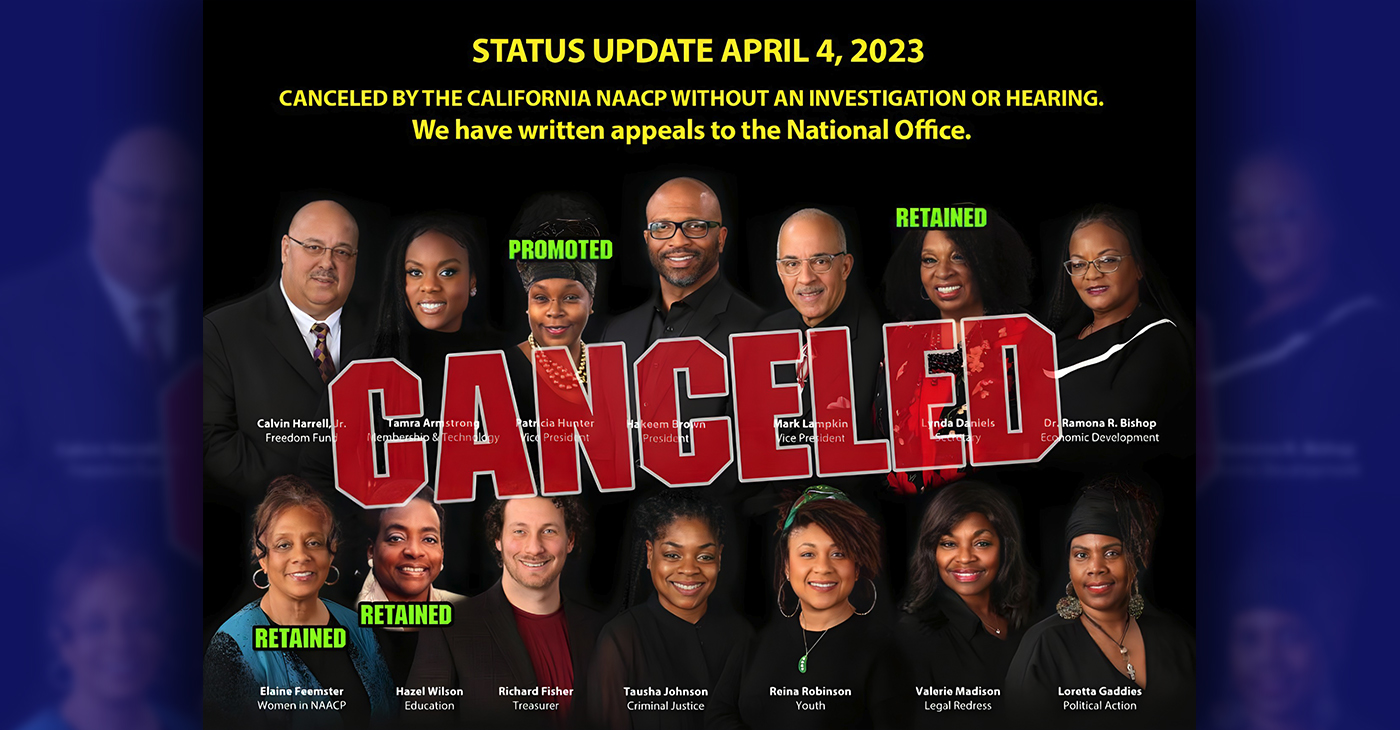
Mark Hedin | California Black Media
The Vallejo branch of the NAACP was torn apart this year by the sudden death of its longtime president, Jimmie Jackson, in January.
Now, a conflict has arisen over who should take his place.
Letters from the organization’s state conference dated March 8 — and lawyers from its national office dated March 15 — demanded that former Vallejo City Council member Hakeem Brown abandon his claims to the position.
As Brown tells it, he first worked with Jackson in 2017 to overcome prosecution related to being “the only Black cannabis cultivator in Napa County.” He joined the NAACP branch Jackson had led since 2008 and as the branch’s elections approached late last year, agreed to work as Jackson’s de facto lieutenant.
As Jackson’s health grew worse in January, he named Brown acting president and died unexpectedly a few days later.
Brown and his supporters maintain that Jackson’s endorsement of Brown as his successor was within his rights as president and that Brown’s position was understood and accepted at the branch’s initial meetings this year.
But those letters from the national and state NAACP offices, stated that according to organization bylaws, because Urban Strategies Council site coordinator Patricia Hunter was “duly and properly elected to the position of First Vice President,” she is first in line to take the reins “in the event of the resignation, removal or death” of the incumbent.
When Jackson was re-elected last year, Hunter, Brown and Mark Lampkin won vice-presidential seats.
There is no dispute that Hunter got the most votes of the four candidates and that Brown and Lampkin tied for second, but Brown and his supporters argue that because there was no official ranking of the vice-presidential seats, Jackson was free to later choose any of the three sitting VPs to act in his stead.
“Because there was no numerical ranking on the ballot for the election,” it was within Jackson’s authority to name Brown to fill in for him, Brown, Lampkin and 10 other members of the branch’s Executive Committee asserted in a March 9 “challenge letter” responding to the state conference’s notice.
Citing NAACP bylaws Article 7, section 2, they wrote: “The duties of the Vice President shall be: a) to perform all the duties of the President in his/her absence or disability. In case of more than one Vice President, the Vice Presidents shall be designated as first, second, third and so forth and shall perform their duties according to their numerical rank.”
“Because there was no such designation, we reject the notion that any one person was the 1st Vice President, until such a time as Pat Hunter was elevated by Jimmie Jackson at the same time Hakeem Brown was elevated to the presidency,” the letter reads. “When our election was held, members voted for the Vice-President, not 1st, 2nd, or 3rd Vice-President. Mr. Jackson was of sound mind when he designated Hakeem Brown President.”
Included with that letter are minutes from the branch’s Jan. 11 Executive Committee meeting in which the leadership matter was discussed.
The challenge letter also says that there were no objections to the appointment at the Feb. 8 branch meeting Brown led. Brown told California Black Media (CBM) that he stepped out of that meeting briefly to allow Hunter to oversee a vote on whether to approve his appointment, and that the entire Executive Committee, including Hunter, unanimously ratified him, with only Secretary Lynda Daniels abstaining.
Daniels, who is charged with producing the minutes of branch meetings, has not provided them for that Feb. 8 meeting.
NAACP officers seem to see it differently.
Rick Callender, California/Hawaii NAACP State Conference President, discussing the election in an email addressed to Lampkin, wrote on March 31: “You lost as you were not the top vote getter. You were not duly elected and indeed lost the election.”
The issue under discussion at that time was regaining access to the branch’s Facebook account, stemming from Hunter, who on March 7 lost access to administration privileges to the social media page.
On that page, on March 16, Lampkin, Assistant Secretary Tausha Johnson and Tamra Armstrong each posted video statements from 2 to 5 minutes long alleging a “coup” being staged against Brown by Hunter, Daniels and Hazel Wilson, another Executive Committee member.
Hunter has declined repeated requests from California Black Media to comment on the situation or her work as branch president, initially referring this reporter to Captain David Smith, NAACP California Hawaii Area Director, who deferred to Callender, who refused to comment on the record, saying he had no personal familiarity with any of the players in the drama and is only concerned with following NAACP rules and bylaws.
For questions particular to the branch, he suggested contacting Hunter, who has yet to respond to subsequent phone calls or emails.
Last week, CBM also emailed and called NAACP lawyer Janette Wallace, who signed the March 15 “cease and desist” letter sent to Brown from the organization’s national headquarters.
Neither Wallace nor the other NAACP members who had been cc’d in an emailed version of the letter and were similarly contacted responded to those requests.
At the Dec. 14 branch meeting, Brown called for congratulating Hunter for receiving an award at the 113th NAACP convention held in Boston for 2022 College Division and Youth Advisor.
He attributes the “coup attempt” to people simply being resistant to change, citing an incident when Hunter asked him in December to relax his posture when dealing with Vallejo officials. There are also suggestions that his interest in the branch’s finances may have spurred resistance to his leadership efforts.
Photo screenshot submitted by a member of the local Vallejo NAACP branch Mark Lampkin
(The national NAACP office has not confirmed this ballot)
Activism
Oakland Post: Week of April 17 – 23, 2024
The printed Weekly Edition of the Oakland Post: Week of April 17 – 23, 2024

To enlarge your view of this issue, use the slider, magnifying glass icon or full page icon in the lower right corner of the browser window. ![]()
Activism
Oakland Schools Honor Fred Korematsu Day of Civil Liberties
Every Jan. 30, OUSD commemorates the legacy of Fred Korematsu, an Oakland native, a Castlemont High School graduate, and a national symbol of resistance, resilience, and justice. His defiant stand against racial injustice and his unwavering commitment to civil rights continue to inspire the local community and the nation. Tuesday was “Fred Korematsu Day of Civil Liberties and the Constitution” in the state of California and a growing number of states across the country.
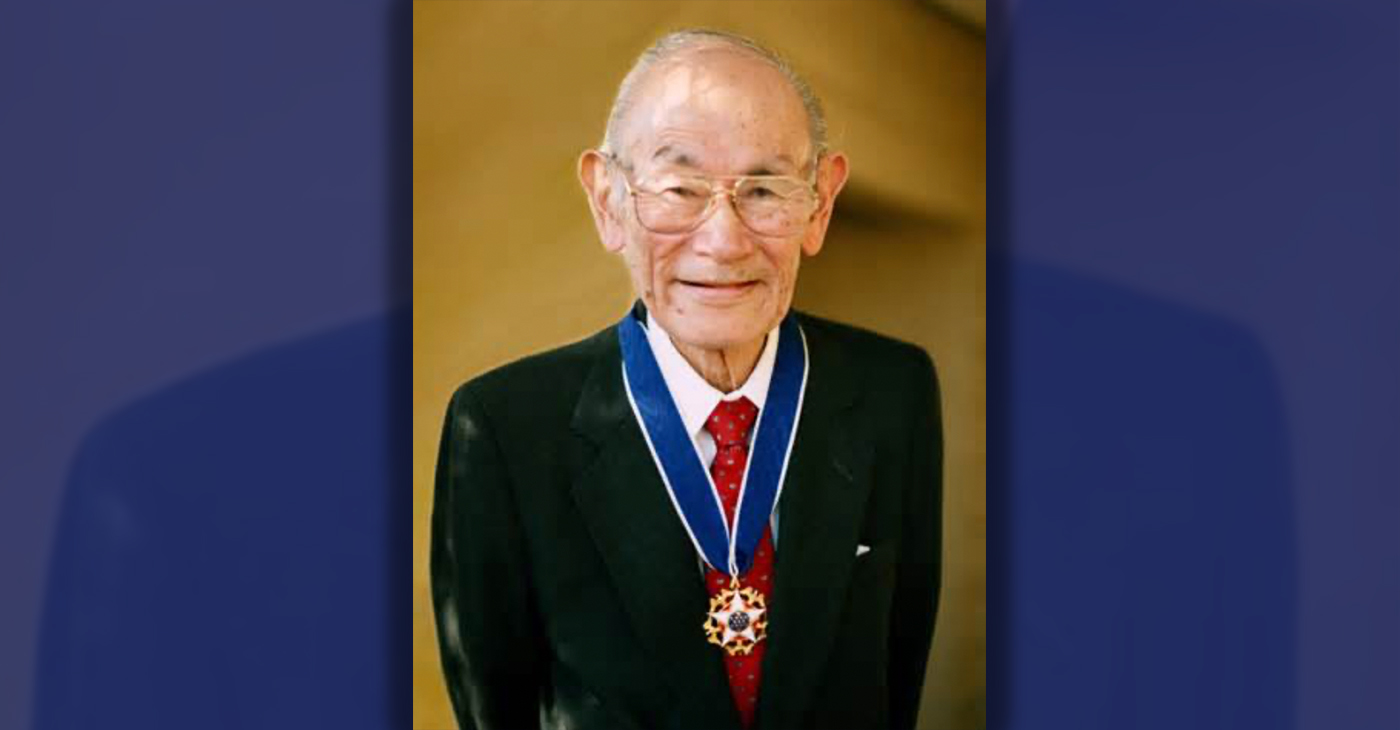
By Post Staff
Every Jan. 30, OUSD commemorates the legacy of Fred Korematsu, an Oakland native, a Castlemont High School graduate, and a national symbol of resistance, resilience, and justice.
His defiant stand against racial injustice and his unwavering commitment to civil rights continue to inspire the local community and the nation. Tuesday was “Fred Korematsu Day of Civil Liberties and the Constitution” in the state of California and a growing number of states across the country.
One OUSD school is named in his honor: Fred T. Korematsu Discovery Academy (KDA) elementary in East Oakland.
Several years ago, founding KDA Principal Charles Wilson, in a video interview with anti-hate organization “Not In Our Town,” said, “We chose the name Fred Korematsu because we really felt like the attributes that he showed in his work are things that the children need to learn … that common people can stand up and make differences in a large number of people’s lives.”
Fred Korematsu was born in Oakland on Jan. 30, 1919. His parents ran a floral nursery business, and his upbringing in Oakland shaped his worldview. His belief in the importance of standing up for your rights and the rights of others, regardless of race or background, was the foundation for his activism against racial prejudice and for the rights of Japanese Americans during World War II.
At the start of the war, Korematsu was turned away from enlisting in the National Guard and the Coast Guard because of his race. He trained as a welder, working at the docks in Oakland, but was fired after the bombing of Pearl Harbor in 1941. Fear and prejudice led to federal Executive Order 9066, which forced more than 120,000 Japanese Americans out of their homes and neighborhoods and into remote internment camps.
The 23-year-old Korematsu resisted the order. He underwent cosmetic surgery and assumed a false identity, choosing freedom over unjust imprisonment. His later arrest and conviction sparked a legal battle that would challenge the foundation of civil liberties in America.
Korematsu’s fight culminated in the Supreme Court’s initial ruling against him in 1944. He spent years in a Utah internment camp with his family, followed by time living in Salt Lake City where he was dogged by racism.
In 1976, President Gerald Ford overturned Executive Order 9066. Seven years later, the 9th Circuit Court of Appeals in San Francisco vacated Korematsu’s conviction. He said in court, “I would like to see the government admit that they were wrong and do something about it so this will never happen again to any American citizen of any race, creed, or color.”
Korematsu’s dedication and determination established him as a national icon of civil rights and social justice. He advocated for justice with Rosa Parks. In 1998, President Bill Clinton gave him the Presidential Medal of Freedom saying, “In the long history of our country’s constant search for justice, some names of ordinary citizens stand for millions of souls … To that distinguished list, today we add the name of Fred Korematsu.”
After Sept. 11, 2001, Korematsu spoke out against hatred and discrimination, saying what happened to Japanese Americans should not happen to people of Middle Eastern descent.
Korematsu’s roots in Oakland and his education in OUSD are a source of great pride for the city, according to the school district. His most famous quote, which is on the Korematsu elementary school mural, is as relevant now as ever, “If you have the feeling that something is wrong, don’t be afraid to speak up.”
Community
For Cervical Cancer Month, Medical Community Focused on Education
January was Cervical Cancer Awareness Month. Physicians, advocates and others in the medical community commemorated the month by raising awareness about a form of cancer they say is highly preventable and treatable. Cervical cancer is caused by a virus called the human papillomavirus (HPV) and it develops slowly over time but can be prevented with proper care in girls as young as 13 years old.

By Magaly Muñoz
January was Cervical Cancer Awareness Month.
Physicians, advocates and others in the medical community commemorated the month by raising awareness about a form of cancer they say is highly preventable and treatable.
Cervical cancer is caused by a virus called the human papillomavirus (HPV) and it develops slowly over time but can be prevented with proper care in girls as young as 13 years old.
Sonia Ordonez, an OBGYN and gynecology surgeon at Kaiser Permanente, stated that as soon as people with cervixes reach the maturity reproductive age, they should start taking preventative measures like getting the HPV vaccine. The vaccine involves a series of two-doses for people aged 9 through 14 or three-doses for people 15 through 45 years old.
“I see a lot of young women who can’t remember or may not have gotten [the vaccine] when they were younger, or maybe got one, but we can give them the series of vaccines and restart at any point in time,” Ordonez said.
She said that cervical cancer is not the only cancer caused by HPV. Strains of the virus can also lead to throat, anal and penile cancers.
Screening is also an effective way to check for cervical cancer and should be done every three years after someone turns 21, doctors recommend. It is best to start as early as possible to catch occurrences early.
Ordonez said that this cancer is also more likely found in people of color and has led to more deaths overall.
A Mayo Clinic article published last month stated that Black women are more likely to be diagnosed and die of cervical cancer, compared to White women in the U.S.
2,000 Black women are diagnosed every year with cervical cancer and 40% die as a result.
“This disparity is not due to genetic differences among White, Black or Hispanic women, but rather related to systemic racism, access to healthcare and socioeconomic factors,” Dr. Olivia Cardenas-Trowers, a Mayo Clinic urogynecologist, said in the article.
Ordonez stated that immigrant women are also highly susceptible to the cancer, as many Latin American countries may not have accessibility to screenings or lack of insurance makes it harder for them to get tested.
Hispanic women are 40% more likely to be diagnosed with cervical cancer, and 30% more likely to die from it, as compared to non-Hispanic White women, according to the Office of Minority Health.
Family medicine physician, Joy Anyanwu, stated that the pandemic contributed to hesitancy about getting cervical cancer screenings among some women. Other factors are people’s aversion to vaccines, parents not wanting to believe that their children are or will become sexually active, and doubt about the overall effectiveness of the vaccine.
“The vaccine is very safe — over 97% effective in preventing cervical cancer,” Anyanwu said. “Even if you aren’t having sex, the earlier you start would actually help.”
Anyanwu said she understands that parents might not want to ask questions about their children’s reproductive health, but it’s a mindset that can be a barrier to having important conversation about prevention or care.
To keep families their families and communties healthy, the doctor emphasized that people should prioritize keeping up with their vaccine series and going to screenings every year.
-

 Activism4 weeks ago
Activism4 weeks agoOakland Post: Week of March 20 – 26, 2024
-

 #NNPA BlackPress3 weeks ago
#NNPA BlackPress3 weeks agoCOMMENTARY: D.C. Crime Bill Fails to Address Root Causes of Violence and Incarceration
-

 #NNPA BlackPress3 weeks ago
#NNPA BlackPress3 weeks agoMayor, City Council President React to May 31 Closing of Birmingham-Southern College
-

 #NNPA BlackPress4 weeks ago
#NNPA BlackPress4 weeks agoFrom Raids to Revelations: The Dark Turn in Sean ‘Diddy’ Combs’ Saga
-

 #NNPA BlackPress4 weeks ago
#NNPA BlackPress4 weeks agoCOMMENTARY: Lady Day and The Lights!
-

 Activism3 weeks ago
Activism3 weeks agoOakland Post: Week of March 27 – April 2, 2024
-

 #NNPA BlackPress4 weeks ago
#NNPA BlackPress4 weeks agoBaltimore Key Bridge Catastrophe: A City’s Heartbreak and a Nation’s Alarm
-

 #NNPA BlackPress4 weeks ago
#NNPA BlackPress4 weeks agoBaltimore’s Key Bridge Struck by Ship, Collapses into Water

